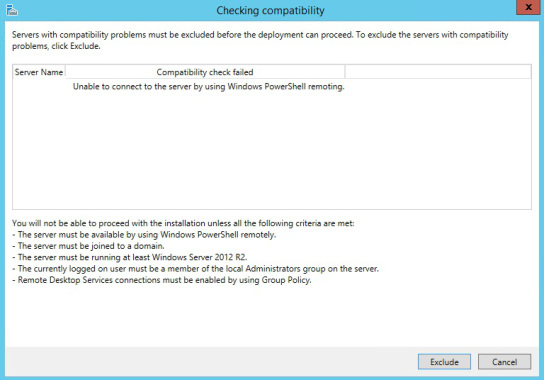When starting an RDS farm install today I was presented with an error saying that the server could not be connected to via WinRM, which was odd as the server giving the error was the machine I was running the install from. A screenshot of the error is below;
I did a little Googling of the problem and found a number of posts reporting this was related to IPv6 and that the fix or workaround was to disable IPv6. In my eyes this isn’t a workaround, Microsoft do advise against disabling IPv6. So, after a little more thinking about this, I wondered how the WinRM listeners were configured, and in particular the IPv6 listeners. Surprise, surprise, the IPv4 listeners were configured, but the IPv6 listeners simply were empty in Group Policy. An empty listener address range in policy means those listeners are disabled. Configuring these correctly in the policy and restarting the server then allowed the RDS installation to proceed.
Microsoft do give some detail on how to configure this setting and I just thought I’d share, as disabling IPv6 shouldn’t really be a fix for anything.
